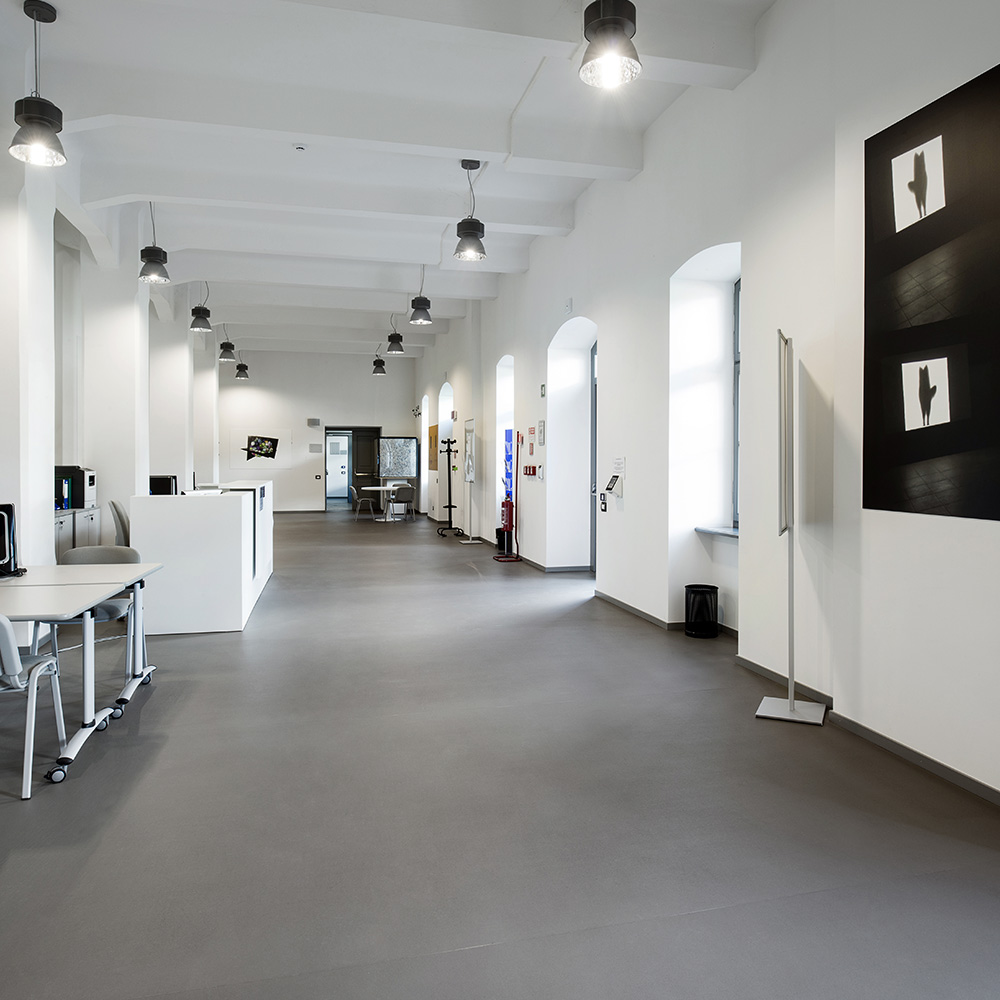For a long time, linoleum floors were considered a standard solution b. An economic makeshift but not very satisfactory, suitable only for public places (schools, clinics, hospitals, etc.). Today, this is no longer the case. Linoleum is experiencing a second youth, above all thanks to a very wide range of colours and formats, as well as to its special characteristics, resistance and versatility, which derive from it being a 100% natural material.
Linoleum floors
The instinctive choice

What is linoleum?
Linoleum is in fact a derivative of linseed oil, created in the 1800s by the Scotsman Frederik Wolton. The ingredients are simple: linseed oil, cork, wood flour and natural resins. These elements are mixed at high temperatures in a large “pot”, then poured and spread in a thickness of about 2-3 mm on a natural jute net. Once cooled and consolidated, the surface of the roll is protected with a finish that makes it very resistant to dirt and therefore easy to clean. This ensures that the final appearance is opaque and the colours are warm and textured. Today linoleum is available in more than 300 colour variations and in squared, slatted and even slab-click (without glue) formats.
The advantages of linoleum floors
The advantages of linoleum floors are numerous. Resilience is the first of them. This material is in fact capable of responding to external mechanical stresses. It thus demonstrates high resistance to impacts and scratches, which makes it suitable for use even in very busy environments.
Linoleum floors are sound-absorbing and heat-insulating. They are easy to clean and hygienic and healthy thanks to their antistatic, qualities. The colours are warm and the appearance is opaque and natural. All these features make them comfortable and recommended for all those who want to create healthy and hygienic environments (nurseries, homes, gyms, offices, clinics).


